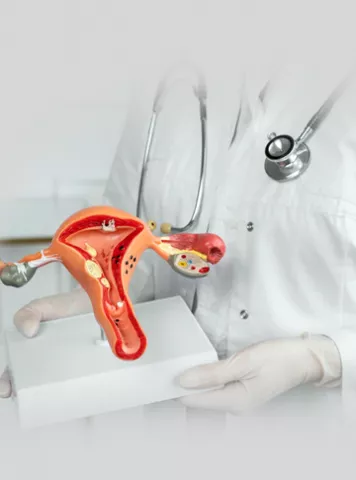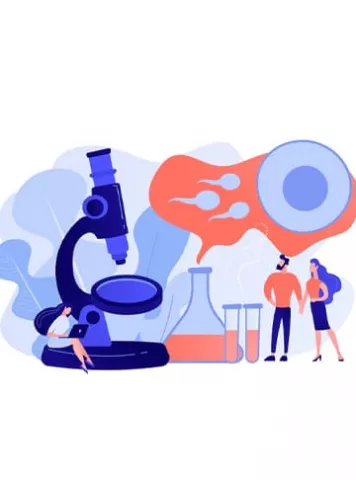Infertility is relatively common these days, however fortunately there are treatments like in vitro fertilisation and insemination, intravaginal insemination, etc that can help deal with the issues. Intrauterine insemination is one such discovery that helps couples with fertility problems, conceive. It is generally undertaken by couples who suffer from unexplained fertility, low sperm mobilization, cervical infections or problems of such sort that prevents the sperm from fertilising the egg.
This treatment involves the insertion of the sperm into the uterus directly when the woman is ovulating so that it increases the chances of conception. The timing plays a crucial factor here, if the procedure is not carried out during the time of ovulation, chances are high that the treatment will not be successful. Also, the sperm are washed off all the toxicants before inserting them into the uterus so that chances of infection are reduced and success rates become high. The treatment is usually carried out at the clinic or the fertility centre.
Sperm washing:
Before insertion, the sperm, whether it comes from a donor or the male counterpart of the couple, are washed and this is how it is done:
The weaker sperm are separated from the stronger and healthier sperm which are then concentrated densely in the insemination sample. Toxins are always removed from the semen the sperms for they may cause infections are reactions, and in some cases that might hinder pregnancy in women.
The IUI procedure:
The process of Intrauterine insemination is not much complex. Fertility drugs are used in conjunction to the treatment to facilitate ovulation. At times, hormonal levels are also controlled. After washing the sperm and removing all toxins, it is introduced into the fallopian tubes of the woman via a catheter that is inserted through the cervix. The woman is generally asked to rest for a few minutes after the procedure. The treatment is generally painless and a very quick one, taking just 10-15 minutes to be carried out.
It is less invasive and cheaper than IVF. Although, its success rate is lower than that of IVF.
The risks of IUI treatment include the side effects of the fertility drugs taken, the chances of infection in the cervical area of the woman and the possibility of conceiving multiples.
The normal side effects of fertility drugs include cramps, mood swings etc. apart from these, swollen ovaries and ovarian hyperstimulation syndrome (OHSS) may appear and cause discomfort. These symptoms cease to exist after the medication has stopped, but in case they do sustain, consult a doctor immediately. Also, if any of these turn from mild to severe, seek medical help.
The possibility of conceiving multiples can be controlled by monitoring the process closely. The doctor might cancel the cycle if too many potential follicles are found, and the doctor might also ask the couple to restrain from having sex during that period for it might put the future babies at risk.
How long does the implementation take?
The egg is viable only for 12-24 hours after ovulation. Varying from person to person and depending upon fertility as well as the number of IUI treatment cycles one has gone through, the implementation generally takes place between 3-12 days. Rest and be kind to yourself, do not be stressed
How will you find out if the implantation has taken place?
Do not be impatient to check if the implantation has taken place. Due to the intake of fertility drugs, taking a pregnancy test too soon might not give accurate results. The test might show false negative or a false positive. Along with regular medication, continuous check-ups are very important. Mild cramps, breast tenderness and slight spotting are some of the symptoms of having conceived.
Factors that affect the success rate of IUI treatment:
The age of the woman, the condition of the fallopian tubes and the status of the sperm sample affect the success rate of IUI treatment massively.
IUI success rate by cycle:
Each cycle increases the success rate of Intrauterine insemination treatment:
With the first cycle, if all the requirements are met, then the chances of getting pregnant increases to 10-20% and with the third cycle it can go up to 50%. By the end of 6 cycles, the chances of getting pregnant can go up as high as 80%.
Although various factors affect the success rates, the general statistics show the above results.
IUI success rate by age:
Amongst various other factors, the age of the woman plays a very important role in determining the success rate of the treatment:
Under the age of 35, a time when women are conventionally considered to be fertile, the chances of success of intrauterine insemination is around 20%. Above the age of 35 but under 40, the chances decrease to 10%. After that the chances of getting pregnant gets reduced to 2-5%.
But as mentioned earlier, the chances increase overtime with each cycle. So be patient and even after multiple cycles if pregnancy doesn’t occur, then consider a backup plan.
IUI success rate at 40:
The success rate at 40 is around 4-5% and with time, it decreases.
IUI success rate over 40:
The success rate over 40 is around 2-3%.
IUI success rate in late pregnancy:
With growing age, the reproductive capacity as well the fertility of a woman decreases. The hormonal levels change that causes the pregnancy to suffer a lot of complications. So, IUI success rate in late pregnancy is much lower, mainly because this treatment sticks to more or less the natural process of getting pregnant. Of course, it necessarily involves the usage of hormonal drugs and fertility drugs, but in counter to the biological clock process of a woman if these drugs are used then it might cause severe health issues for the woman.
Also, the child bearing capacity decreases with increasing age. Even if pregnancy occurs, sustaining the child for 9 months is a very tricky process.
Articles
2022


Guide to infertility treatments IUI
Why Artificial Insemination Usually Fails
Author Name:Dr. Pooja Kumari||Mentor Name: Dr. Reema Sircaron April 27, 2020 ...
2022


Guide to infertility treatments IUI
How Counsellor can help during IUI Treatment
Often people dealing with problems such as infertility need support and counse...
2022


Guide to infertility treatments IUI
IUI उपचार की सफलता दर को बढ़ाने के 7 असरदार उपाय
अंतर्गर्भाशयी गर्भाधान अथवा ...
2022


Guide to infertility treatments IUI
Best Time for IUI: When is the Best Time to Do IUI?
Intrauterine insemination (IUI), in simple terms, is a simple procedure that i...
2022


Guide to infertility treatments IUI
IUI for Male Factor Infertility
IUI for Male Infertility Treatment Intrauterine Insemination (IUI) process ...
2022


Guide to infertility treatments IUI
Is Intrauterine Insemination (IUI) safe?
Is IUI Safe? The answer to this question is, ‘Yes, IUI is safe procedure....
2022


Guide to infertility treatments IUI
Things to know before your first IUI
FOR MEN Men just need to contribute in the treatment with their sperm, whic...
2022


Guide to infertility treatments IUI
Success Rate of IUI Treatment – What to expect after IUI
What is IUI? IUI, a kind of artificial insemination, is a reproductive proc...
Pregnancy Calculator Tools for Confident and Stress-Free Pregnancy Planning
Get quick understanding of your fertility cycle and accordingly make a schedule to track it















